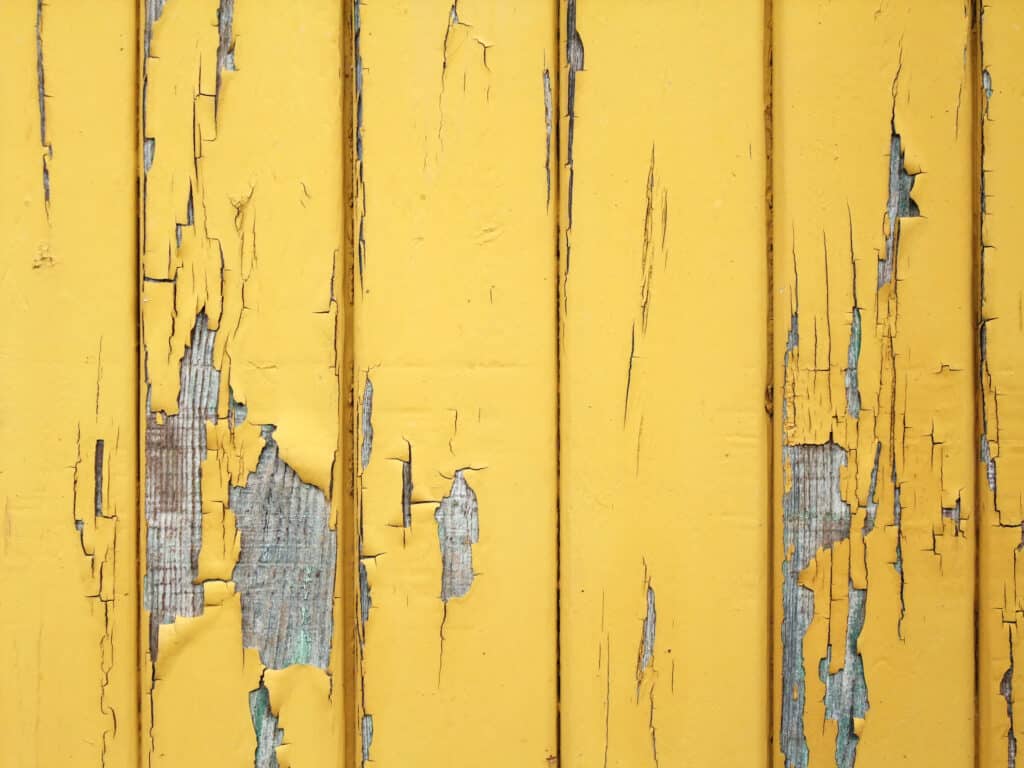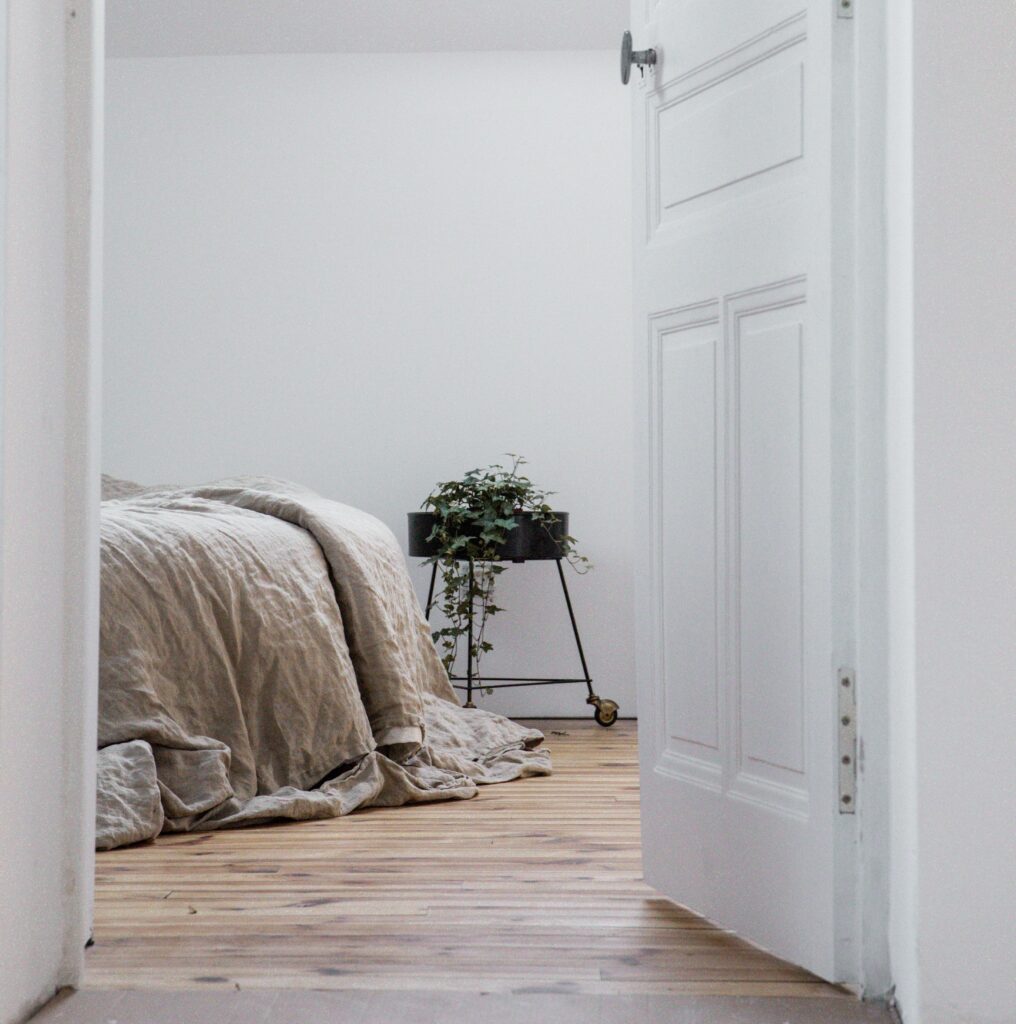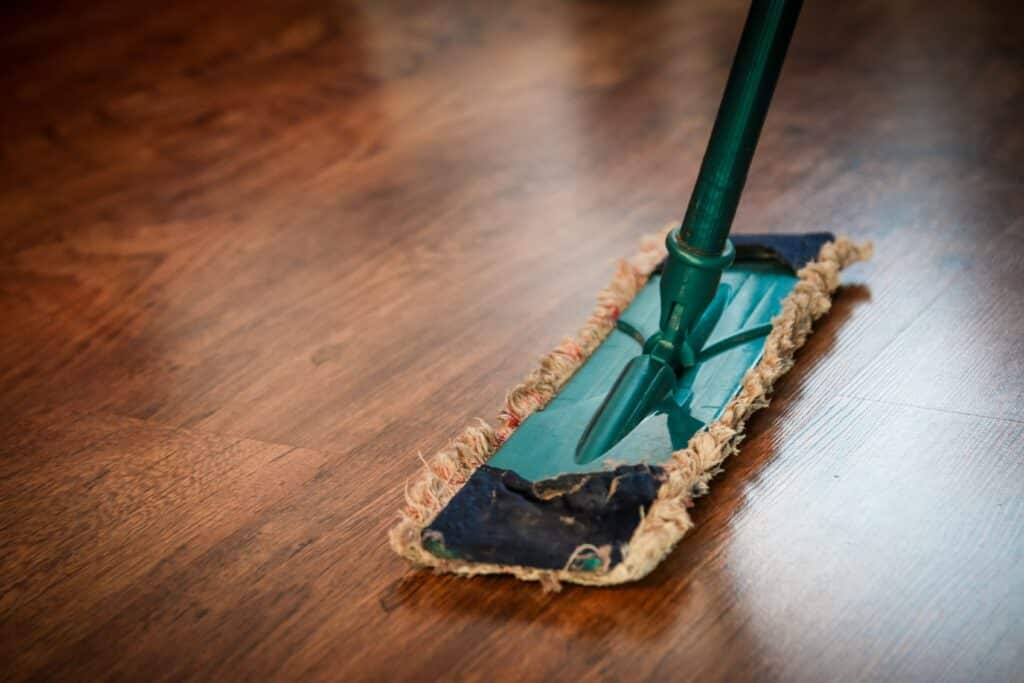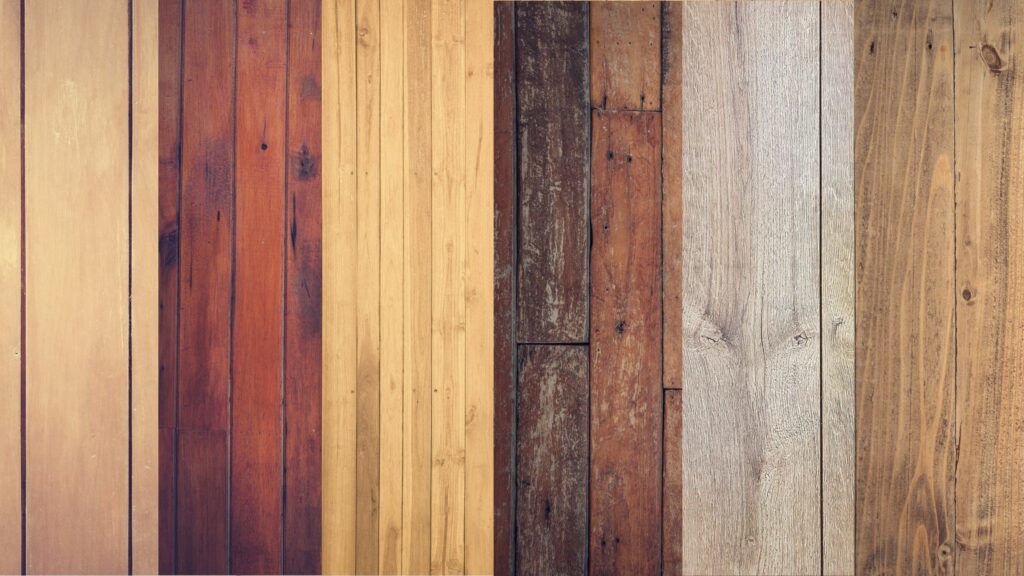In this post you’ll learn in a few easy steps how to remove glue residue from your hardwood floors without damaging them.
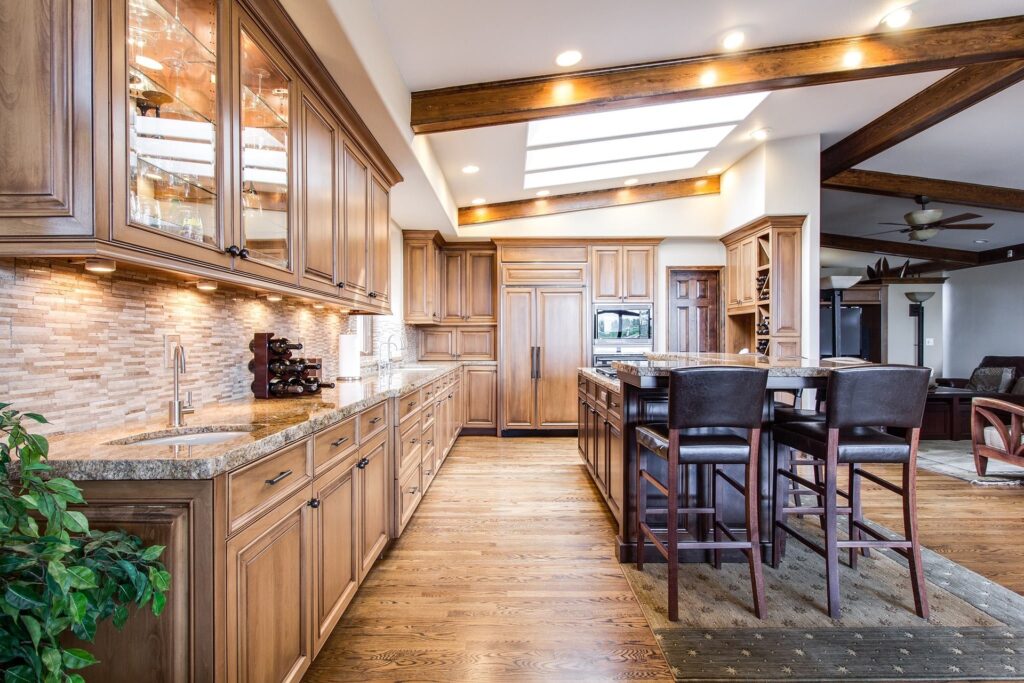
Sometimes people want to change the look of their interior. If they once thought that carpet or tiles would be nicer than their hardwood floors, they usually regret this after a couple of years. So they have to face the daunting task of removing glued carpet or tiles from their hardwood floors. There will always remain glue residue on the surface of your hardwood floor. Or, you might have accidentally spilled some glue on your floors. Glue can be quite challenging to remove and could damage the finish of your hardwood floors if not done correctly. However, with the right tools and products, you can remove glue from your hardwood floors without causing any harm. In this guide, we will show you the step by step process of safely removing glue from hardwood floors.
Determining the best approach
First, you have to determine the situation you’re facing:
-Wet glue stain
-Dried up glue stain
-Entire floor full of dried op glue
Each of these situations require different solutions. Each of the following step-by-step guides will address one of these problems.
How to remove wet glue stain from hardwood floors
Products and Tools Required:
- Dishwasher soap
- Clean cloth
Step 1: Get warm water and dishwasher soap
Mix some warm water and a few drops of dishwasher soap in a bowl. The ratio should be around 2:1 (2 parts of water, 1 part of the dishwasher soap). Stir the mixture until it is sudsy.
Step 2: Wipe the glue away
Use a clean cloth and make it damp in with the soapy mixture.
Gently scrub away at the glue stain with the cloth in a circular motion until it has been completely removed.
Step 3: Dry the area
Once you have removed the glue, use a clean dry cloth and wipe away any remaining moisture.
How to remove dried up glue stains from hardwood floors
Products and Tools Required:
- Mineral spirits
- Clean cloth
- Protective gloves
- Protective glasses
Step 1: Use mineral spirits
Mineral spirits are a gentle and effective way to remove dried up glue from your hardwood floors. Dip a clean cloth into the mineral spirits, then gently rub it onto the glue stain and let it sit for a few minutes.
Make sure to wear protective gloves and eyewear when using mineral spirits and open the windows to let air circulate.
Step 2: Wipe the glue away
Once the glue has been softened, rub the glue away in circular motions until it is completely removed. Be careful not to scratch or damage your hardwood floors while doing this.
If the glue isn’t coming off, you can use acetone instead. This will remove most glue, but it will also remove paint or any polyurethane finish on your hardwood floor. Use it as a last resort.
Step 3: Wipe the area clean
Once the glue has been removed, use a damp clean cloth to wipe away any excess mineral spirits or acetone.
Step 4: Dry the area
Finally, use a dry cloth to completely dry the area.
How to remove glue from an entire hardwood floor
If your entire floor is covered in glue, for example when you removed carpets, there are only 2 viable options. Option 1 is that you do the previous steps for the removal of dried glue for the entire floor. This is however very labor intensive and sometimes the layer of glue is so thick that this isn’t the best way to go. Option 2 is sanding the floor, which will be a lot faster and less labor intensive. We’ll show you how to do it.
Products and Tools Required:
- Sander or sanding machine
- Coarse-grit sandpaper (8- or 16-grit)
- Abrasive cleaning stick
- Vacuum cleaner
- Clean cloth
- Protective glasses
- Dust mask
Step 1: Clean the floor
First, vacuum the floor to remove all debris. This is important to avoid scratching the floor with any dirt particles and to keep the sandpaper from clogging up too quickly.
Step 2: Sand the floor
Using a coarse-grit sandpaper, start at one edge of the floor and sand in long strokes. If you use a sander, hold it firmly with both hands and move it in a straight line. Work your way across the room while gradually increasing the pressure to ensure that all glue is removed. Depending on the thickness of the glue layer, it will clog up the sandpaper fast. Make sure you have enough sandpaper to do the entire floor. You can unclog the sandpaper by rubbing it with an abrasive cleaning stick. This will extend the longevity of the sandpaper so you can use it again.
Always wear a dust mask and protective glasses when sanding.
Step 3: Remove all dirt and debris
Once you have sanded the entire floor, vacuum all dirt and glue residue from the surface. If the glue residue is too sticky, use a brush.
Next, clean the floor with a damp cloth to mop up the small dust particles. Make sure to wring out the mop very well so that it is only damp and not wet. Excessive water can damage your hardwood floor and make it buckle.
Step 4: Refinish the floor
Congratulations! The floor is now glue-free. After sanding with coarse-grit sandpaper, you can refinish your hardwood floor.
Following these steps can help you successfully remove glue from your hardwood floors without causing any major damage to them. With the right steps, tools and some elbow grease, the glue will finally be gone.
Editorial Staff at TwinRight is a team of experts helping its readers with product comparisons and convenient guides. Whether it's choosing the right floor cleaner, updating you on your favorite gadgets or helping you fix those annoying squeaky door hinges, we've got you covered!
